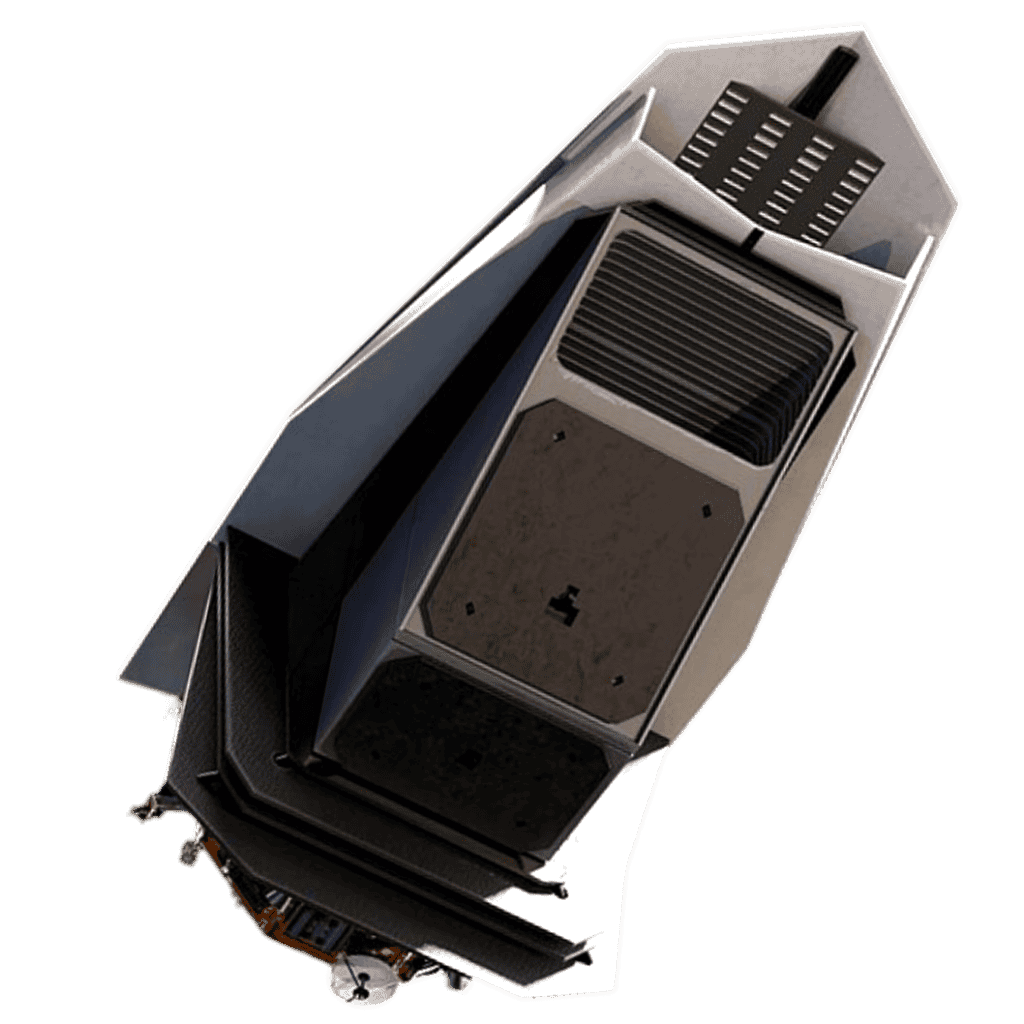NEO Surveyor
Planetary Defender
Infrared telescope for detecting near-Earth objects

USPs
- Detects NEOs larger than 140 meters
- Catalogs 90% of potential impact threats
- Follow-up to NEOWISE mission
- Uses two infrared channels for size and orbit measurements
- Operates at L1 for uninterrupted sky coverage
- Rapid data processing for timely threat assessment
- Supports global planetary defense initiatives
Major Milestones
- 2005-01: Concept initiated as NEOCam, proposed to address the U.S. Congress mandate to detect 90% of near-Earth objects larger than 140 meters.
- 2019-09: Designated as a directed mission by NASA’s Planetary Defense Coordination Office, securing funding outside the science budget.
- 2021-06-11: Authorized to proceed to the preliminary design phase, marking the start of formal development led by Jet Propulsion Laboratory.
- 2022-11-29: Passed Key Decision Point C review, establishing a cost baseline of $1.2 billion and a launch no later than June 2028.
- 2023-04: Began integration of the primary mirror and infrared detectors, advancing toward launch preparations.
- 2024-08: Completed assembly of the telescope’s optical bench with mirrors, a critical step in instrument development.
- 2025-02-13: Passed critical design review, confirming the spacecraft's technical readiness for final fabrication.
- 2025-07-17: Ongoing integration and testing, on track for a September 2027 launch to enhance planetary defense efforts.
- 2027-09: Anticipated launch aboard a SpaceX Falcon 9 from Florida, initiating its mission from the Sun-Earth L1 point (projected).
- 2028-02: Expected to begin its five-year baseline survey, aiming to detect two-thirds of NEOs larger than 140 meters (projected).
Cosmic Portrait
NEO Surveyor: Protecting Earth
NEO Surveyor is NASA’s next-generation space-based infrared telescope, scheduled for launch in 2028, designed specifically to detect and track near-Earth objects (NEOs) such as asteroids and comets that may pose a threat to our planet. As a dedicated planetary defense mission, NEO Surveyor represents a major advancement in our ability to identify hazardous objects long before they reach Earth’s vicinity.
- Mission Objectives: The primary goal of NEO Surveyor is to discover and catalog at least 90% of NEOs larger than 140 meters in diameter, which are large enough to cause regional or global damage. By determining their size, orbit, and reflectivity, the spacecraft will provide critical data for impact risk assessment.
- Orbit & Stability: Positioned at the Sun–Earth L1 Lagrange point, NEO Surveyor will have a clear, stable view of the inner solar system, avoiding atmospheric interference and enabling continuous scanning of areas close to the Sun—regions where ground-based telescopes struggle to detect incoming objects.
- Infrared Technology: The telescope will operate with two specialized infrared imaging channels optimized for detecting heat signatures of asteroids. These wavelengths allow it to measure object size and composition more accurately than optical telescopes, even for dark, low-reflectivity asteroids that are otherwise hard to see.
- Hardware & Innovation: NEO Surveyor incorporates advanced cryogenic cooling systems and radiation-hardened electronics, building on the proven heritage of the NEOWISE mission while delivering significantly higher sensitivity and detection range.
Future Impact
By expanding our catalog of potentially hazardous asteroids, NEO Surveyor will enhance Earth’s preparedness for future cosmic threats. Its long-term infrared survey will generate a vast dataset for scientists, planetary defense planners, and mission designers working on deflection technologies or emergency response protocols. The mission’s data will feed directly into NASA’s Planetary Defense Coordination Office (PDCO), improving international collaboration and early warning systems.
NEO Surveyor also contributes to broader astronomical research, including studies of asteroid families, comet activity, and the evolution of the solar system’s small bodies. It will work in tandem with existing observatories and upcoming missions such as ESA’s Hera and NASA’s DART follow-up efforts.
Why NEO Surveyor Matters
NEO Surveyor is Earth’s guardian, scanning the skies for cosmic dangers with unmatched infrared vision.
With space-based vigilance, NEO Surveyor ensures humanity is no longer blind to potentially catastrophic threats from space. It brings unprecedented precision and reach to our planetary defense strategy, turning knowledge into preparedness and ensuring the future safety of our world.
Fun Fact
NEO Surveyor could save Earth by spotting dangerous asteroids early!